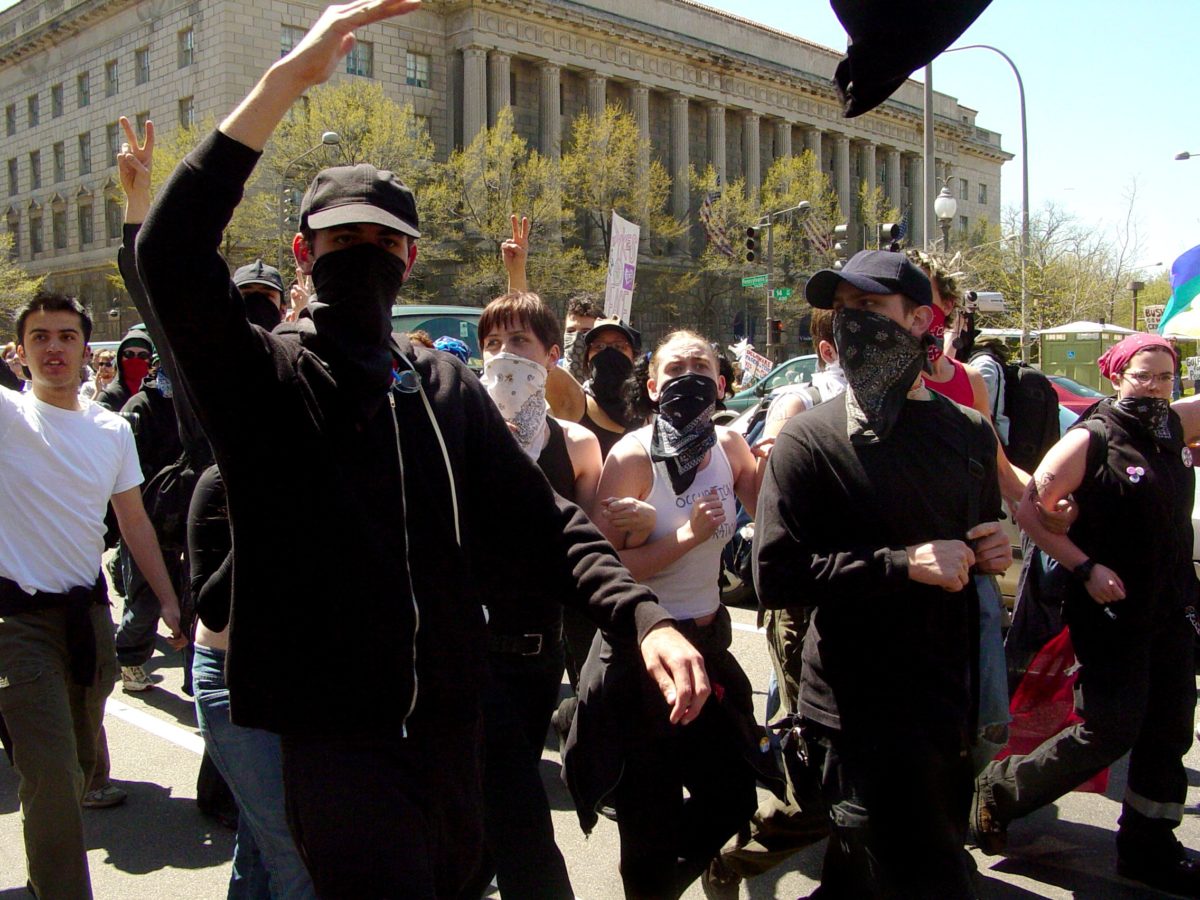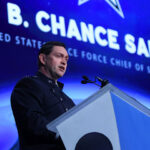Thursday, August 24th 2017 (WASHINGTON) – The violent clashes in Charlottesville last week between armed white supremacists on one side and far-left militants have in many ways further complicated the American political landscape, in part by turning a militant fringe anarchist movement into a household name.
In his rally in Phoenix on Wednesday, Donald Trump used the bully pulpit to name the group. “You know, they show up in the helmets and the black masks, and they’ve got clubs and they’ve got everything — Antifa!”
http://foxbaltimore.com/news/
The group was credited with the Berkeley riots in April where they caused $100,000 in property damage. Anti-fascists were part of the violent demonstrations in February at the G-20 Summit in Hamburg, Germany. A member of Antifa was featured in the viral video from inauguration day sucker-punching white supremacist David Spencer.
Antifa has been particularly visible at recent demonstrations, especially in Charlottesville, where the armed anarchists drew a strange degree of sympathy from the national media as they physically fought neo-Nazis and white supremacists.
Being against fascism obviously has popular appeal, after all, fighting Nazis is as American as apple pie. But the emergence of the Antifa as a militant organization to counter violent right-wing extremists is more complex and raises new questions about the use of violence as a political tool.
THE HISTORY OF ANTIFA:
The Anti-fascist movement, or Antifa, have been part of the European political landscape since World War II. In recent decades, the group has predominantly centered in western Europe, in Germany, Italy, the Netherlands, the U.K. Their ideology is broadly anti-capitalist, anarchist and anti-fascist in the most general sense of opposing centralized state control and anything that can be seen as authoritarian.
Their first major foray into U.S. activist politics was around the WTO riots in Seattle in 1999. However, experts say the movement has been expanding since 2016, in conjunction with the growth of the “alt-right” and a more populist strain of right-wing nationalism.
Mark Bray recently authored ‘Antifa: The Anti-fascist Handbook,’ the first English language history of the militant left-wing movement. In an editorial piece for the Washington Post last week, Bray described the Antifa as “a radical pan-leftist politics of social revolution applied to fighting the far right.”
The group shares a number of similarities with right-wing militias, armed, deeply skeptical of the government and the institutions of the state, protective of individual rights and prepared to use force.
“Its adherents are predominantly communists, socialists and anarchists who reject turning to the police or the state to halt the advance of white supremacy,” Bray explained. “Instead, they advocate popular opposition to fascism as we witnessed in Charlottesville.”
The group may use some peaceful resistance tactics but fundamentally believes in preemptive political violence. Bray continued that “their willingness to physically defend themselves and others from white supremacist violence and preemptively shut down fascist organizing efforts before they turn deadly distinguishes them from liberal anti-racists.”
Daryl Johnson is a former domestic terrorism analyst at the Department of Homeland Security and founder of DT Analytics, a consultancy group focused on domestic extremism. He broadly puts Antifa in the “the violent anarchist category.” Anarchists have been part of the extremist landscape for decades, but only recently emerged under this new name, affiliated with the European anti-fascist network.
“From a threat perspective, we would put them on the low-end,” Johnson said, noting these groups are typically involved in property destruction. Antifa has used violence against police officers on the front lines of protests and physically confronted white supremacists, but they don’t represent the same kind of threat to the public as far-right extremists.
According to the National Consortium for the Study of Terrorism and Responses to Terrorism (START), extremists on the far-right, including neo-Nazis, the KKK and militias have committed more individual acts of violence in recent decades than the far-left and Islamist extremists combined.
“You don’t want to too sympathetic,” Johnson explained. “But you’ve got to remember the difference between the two is one is more geared towards attacking and killing people and has a history of violence.”
ANTIFA TACTICS IN THE CURRENT POLITICAL CONTEXT:
Since Donald Trump’s inauguration cities across the country have played host to massive gatherings of protesters. Hardly a week goes by without a major gathering of political activists with representation from multiple sides of any given issue.
Most recently, protesters outside of Donald Trump’s rally in Phoenix clashed with police officers. Last weekend, cities from Boston to Seattle saw largely peaceful gatherings when tens of thousands of protesters showed up to counter the so-called “Free Speech” or “Freedom” rallies planned by white nationalists.
Jason Del Gandio, professor of social movements at Temple University explained that within the current political dynamic, hate groups have become more emboldened and the would-be targets of those groups are looking for protection or a way to fight back.
“When you’re confronted by that kind of reality it makes sense that people are looking for some type of ideology, some type of practice or activity they can put in place to confront this,” he said. “This isn’t really just a war of words at this point.”
Part of the appeal of a militant left-wing group, like Antifa, is that it gives certain groups a kind of “self-protection,” Del Gandio said, especially after groups like Black Lives Matter have drawn attention to communities that doubt whether traditional law enforcement will protect them.
“I would say we’re at a point in U.S. history where people are looking for alternative means of self-protection,” he said. “Rather than going to the police, people are asking, ‘How can we protect ourselves in the face of hatred?’”
Benjamin Ginsberg is a professor of political science at Johns Hopkins University and authored the book, ‘The Value of Violence.’ He noted that in certain circumstances political violence can be justified, for example when the police are not able to offer protection. “We have to view politics coldly and view violence as a tactic that may or may not be appropriate at different times.”
While Ginsberg identified himself as a conservative and does not advocate violence or the Antifa movement, he argued that pacificism without the threat of violence is largely ineffective.
“If you’re a non-violent protester and you don’t have allies who have a capacity for violence, then you’re in Tiananmen Square,” he said. “Violence is never a good thing but if your opponents are prepared to use violence against you, in the real world turning the other cheek doesn’t work too well.”
ARMS ON ALL SIDES:
The Antifa belief that preemptive violence is justified and scenes from the latest clashes between far-left and far-right groups have raised the specter of a potentially broader use of militant resistance as a political tactic.
In Charlottesville, groups of white nationalists marched with assault rifles and open-carried smaller arms. In Phoenix this week, the John Brown Gun Club showed up to the Trump rally with their rifles. The group does not call itself “Antifa,” but according to the group’s Facebook page, its mission is to “fight white supremacy, & build liberatory community defense.”
There is a certain irony that the emergence of armed groups on both sides of defining social issue has emerged in the context of a debate over Confederate monuments. In part, it’s a reminder that in the not-so-distant past Americans demonstrated a profound capacity for violence against one another in the name of a cause both sides saw as existential. And it has left a lingering imprint more than 150 years later.
Del Gandio noted that American political life is now at a kind of precipice.
“The most extreme potential outcome is some type of new civil war that would happen,” he said, noting the images of violent clashes in the streets in a way “prefigures the possibility of another civil war.”
“The more moderate take is people are experimenting with different forms of policing or self-protection … I think that’s part of the anxiety of the moment we’re living in.”
“The more moderate take is people are experimenting with different forms of policing or self-protection … I think that’s part of the anxiety of the moment we’re living in.”






